|
A Virtual Walk Through Jacksonville History
Stop 35: Haines Brothers Store
Despite the signage, the brick building across the street at 110 South Oregon in Jacksonville has been many things, but never John Orth’s “butcher shop.” Originally, it was the Haines Brothers store.
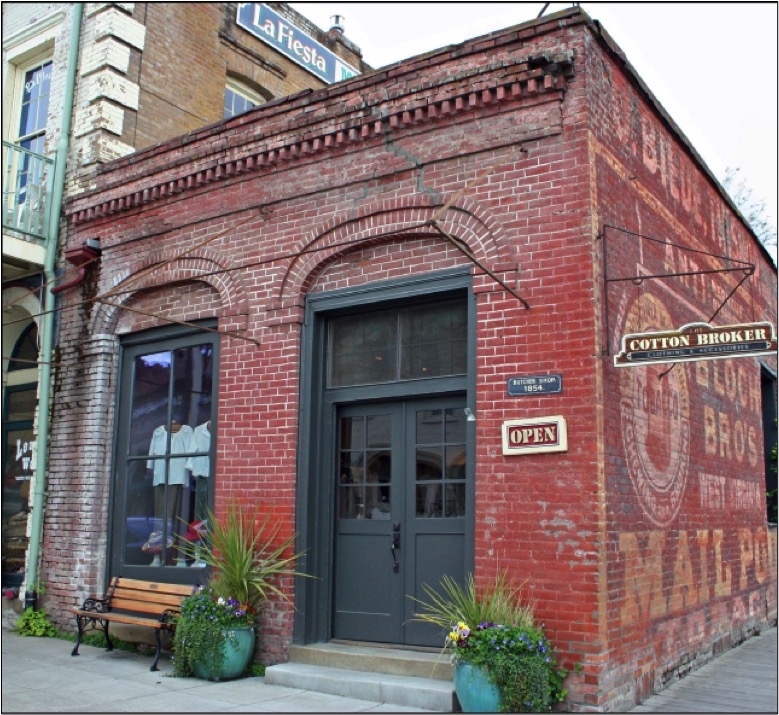 Haines Brothers Store, constructed @ 1861. Photo Source: Carolyn Kingsnorth Haines Brothers Store, constructed @ 1861. Photo Source: Carolyn Kingsnorth
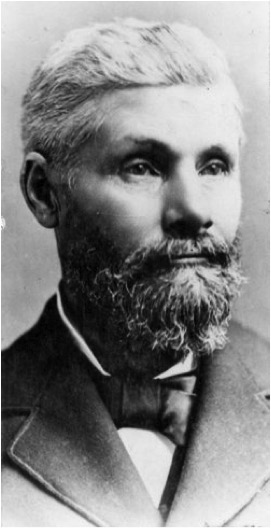 Israel Haines Israel Haines
Photo Source: ancestry.com |
Israel Haines arrived in Jacksonville no later than 1854 and was soon joined by his brother Robert. Prior to 1856 they were operating “Haines Boot and Shoe Store” out of a wood frame building at the southwest corner of California and Oregon streets. In 1857, James Cluggage, who had legal donation land claim rights to the property, deeded the property to the Haines brothers.
By 1861 they had constructed this one-story brick structure and were advertising “Haines & Bros. Fire Proof House” and “Variety Store in Haines Bros. Brick Building.” The construction expense may have overextended the brothers financially, since by 1862 Israel was reading law and Robert was studying medicine. In 1864 Israel was elected to the state Legislature and shortly afterwards was admitted to the bar in Salem. Robert relocated to San Francisco.
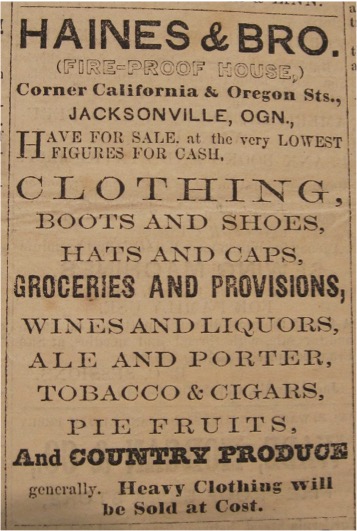 Haines & Bro. Advertisement Haines & Bro. Advertisement
The Oregon Sentinel. May 25, 1861 |
In the mid-1860s, the building was occupied by the Caro brothers, Isador and Simon. In 1866, Isador had summoned his 16-year-old brother from Germany to join him in the store. While in Jacksonville, Simon learned Chinese so he could deal with the 800 Chinese miners in Jackson County. This corner location became known as Caro’s Corner despite the brothers having moved to Ashland by 1869, becoming among the first merchants in that city.
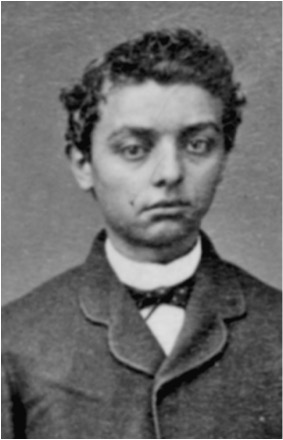 Simon Caro Simon Caro
Photo Source: SOHS #22415 |
Short term occupancy appears to have been the norm. Gustav Karewski’s store occupied the site for two or three years before he relocated his business to the Brunner Building (Stop #23). Saddler Jeremiah Nunan was greeting his customers in the building in early 1872. But by late summer Max Muller and Max Brentano had moved their “groceries, candies, nuts, and stationery” store to the “fire proof brick building situated on the corner of California and Oregon.”
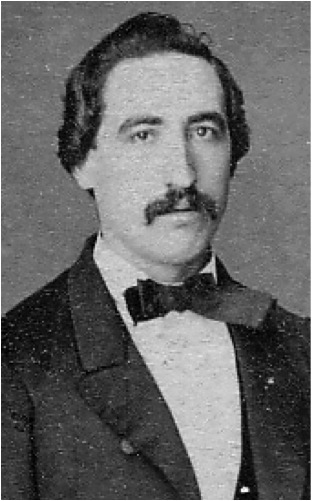 Max Muller Photo Source: SOHS #348 Max Muller Photo Source: SOHS #348 |
When Muller occupied the building, it also became known as the “Post Office Store.” Apparently previous building occupants had shared space with the post office since R. Dugan opened the first Jacksonville post office in 1854, and it’s opening was associated with this location. An 1862 Haines & Bro. ad referred to their store as the “Post Office Building.” Whether interim tenants between Haines and Muller also shared space with the post office is unknown.
It should be noted that the term “post office” may be a misnomer. The first “post offices” on the West Coast were essentially contracts with individuals or businesses who were authorized to handle the mail and deliver it along a designated route. Individuals were usually “express riders”; businesses were typically stage companies; and the “post office” was probably the express office or stage stop. Mail might be addressed to a general area and could turn up at any local “post office,” so individuals making trips to town might ask for mail for all their neighbors.
Max Muller was appointed Jacksonville Postmaster in 1870 and retained that appointment for 18 years. Wherever his business was located became the post office, so from 1872 to 1874, this building at the corner of Oregon and California both post office and store.
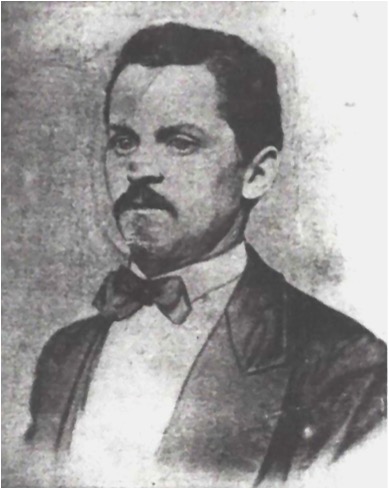 Louis Solomon Louis Solomon
Photo Source: ancestry.com |
However, in April 1874, a major fire wiped out most of the block across Oregon, destroying many of Jacksonville’s original wooden buildings including the notorious Eldorado Saloon (See Stop #34). Louis Solomon was one of the merchants wiped out in that fire, suffering an $8,000 loss.
He relocated his business to the “Haines fire proof” brick store. He also immediately insured his general merchandise against fire loss. Solomon, a native of Poland, was probably the longest term tenant of the building, occupying it at least through the decade of the 1880s. Solomon did have another encounter with fire in 1888 when a fire that began across California at David Linn’s furniture factory wiped out the town’s original Main and California street wooden buildings that had since become Chinatown (See Stop #25). However, Solomon suffered no losses since “the fire proof character of Solomon’s store building was fully demonstrated, as the flames were raging against the rear wall half an hour before being extinguished, without raising the temperature inside.”
In the 1890s, the building appears to have been vacant, but by 1898 it housed a saloon. Today it is home to a popular women’s clothing store, The Cotton Broker.
Sources Cited
Evans, Gail E.H. “Haines Brothers Store,” Jacksonville Historical Survey, April 1980.
Levinson, Robert Edward. The Jews of Jacksonville, University of Oregon Masters Thesis, 1962.
Atwood, Kay. Minorities of Early Jackson County, Jackson County Intermediate Educational District, Instructional Media Center, Medford, OR, 1976.
|